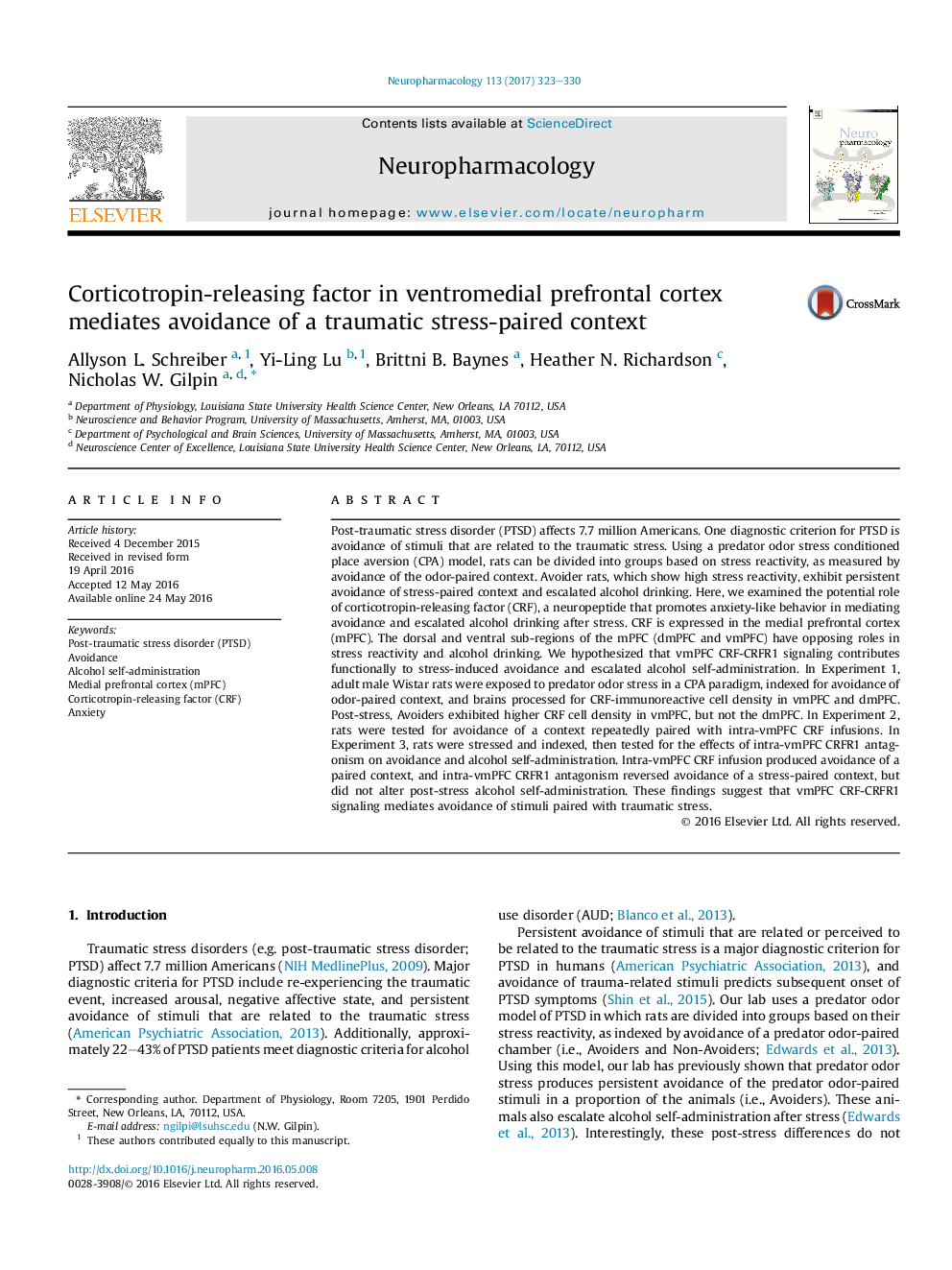| Article ID | Journal | Published Year | Pages | File Type |
|---|---|---|---|---|
| 5549154 | Neuropharmacology | 2017 | 8 Pages |
â¢Predator odor stress increases CRF peptide content in vmPFC of rats that avoid a stress-paired context.â¢Predator odor stress increases CRF cell counts in vmPFC of rats that avoid a stress-paired context.â¢CRF infusions in the vmPFC produce conditioned avoidance.â¢CRF1 receptor antagonism reduces avoidance of a stress-paired context.â¢CRF1 receptor antagonism does not affect post-stress alcohol drinking.
Post-traumatic stress disorder (PTSD) affects 7.7 million Americans. One diagnostic criterion for PTSD is avoidance of stimuli that are related to the traumatic stress. Using a predator odor stress conditioned place aversion (CPA) model, rats can be divided into groups based on stress reactivity, as measured by avoidance of the odor-paired context. Avoider rats, which show high stress reactivity, exhibit persistent avoidance of stress-paired context and escalated alcohol drinking. Here, we examined the potential role of corticotropin-releasing factor (CRF), a neuropeptide that promotes anxiety-like behavior in mediating avoidance and escalated alcohol drinking after stress. CRF is expressed in the medial prefrontal cortex (mPFC). The dorsal and ventral sub-regions of the mPFC (dmPFC and vmPFC) have opposing roles in stress reactivity and alcohol drinking. We hypothesized that vmPFC CRF-CRFR1 signaling contributes functionally to stress-induced avoidance and escalated alcohol self-administration. In Experiment 1, adult male Wistar rats were exposed to predator odor stress in a CPA paradigm, indexed for avoidance of odor-paired context, and brains processed for CRF-immunoreactive cell density in vmPFC and dmPFC. Post-stress, Avoiders exhibited higher CRF cell density in vmPFC, but not the dmPFC. In Experiment 2, rats were tested for avoidance of a context repeatedly paired with intra-vmPFC CRF infusions. In Experiment 3, rats were stressed and indexed, then tested for the effects of intra-vmPFC CRFR1 antagonism on avoidance and alcohol self-administration. Intra-vmPFC CRF infusion produced avoidance of a paired context, and intra-vmPFC CRFR1 antagonism reversed avoidance of a stress-paired context, but did not alter post-stress alcohol self-administration. These findings suggest that vmPFC CRF-CRFR1 signaling mediates avoidance of stimuli paired with traumatic stress.
